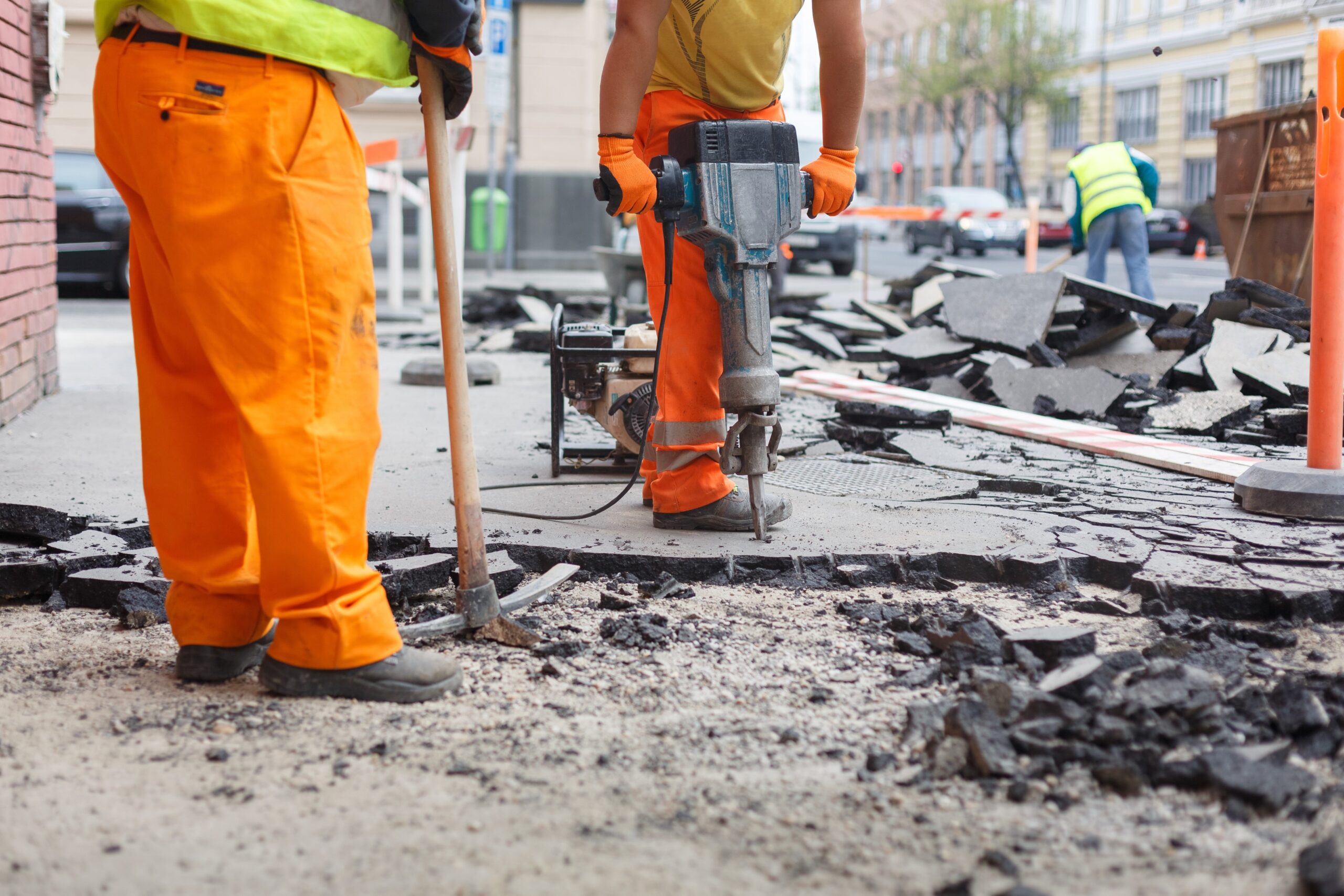

Asphalt demolition is a crucial process when it comes to replacing or repurposing asphalt surfaces that have reached the end of their lifespan. Whether it’s a parking lot, driveway, or road, knowing what to expect from the demolition process can help you make informed decisions and prepare for what lies ahead. Here’s a detailed look at the step-by-step process of asphalt demolition:
1. Site Assessment and Planning
Before demolition begins, contractors conduct a thorough site assessment. This step includes evaluating the asphalt’s condition, measuring the area, identifying any underlying issues, and creating a plan that addresses environmental considerations and potential hazards.
What to Expect:
- Contractors will inspect the site to determine if any buried utilities or drainage systems may need attention.
- A demolition plan will be created, outlining the equipment needed, estimated timeline, and recycling or disposal methods.
2. Permits and Regulatory Compliance
Demolition often requires specific permits to ensure the project complies with local regulations and safety standards. This is especially true for larger projects or those in urban areas where noise and dust control may be regulated.
What to Expect:
- Your contractor may handle the permit applications on your behalf.
- Expect additional checks on environmental regulations, especially if recycling or hazardous materials are involved.
3. Preparation and Site Safety Measures
Once permits are secured, the next step is preparing the site. This includes setting up safety barriers, removing obstacles, and putting in place protocols to protect workers and nearby property.
What to Expect:
- Safety fencing, warning signs, and traffic management (if in a public area) will be installed.
- Any necessary equipment like excavators, jackhammers, or milling machines will be brought to the site.
4. Demolition Techniques and Equipment
The actual demolition involves removing the asphalt using one or a combination of methods, depending on the project. Common techniques include milling (grinding down the top layer), saw cutting (for controlled removal), or full-depth removal (for complete replacement).
What to Expect:
- Milling: This process removes the top layer, which can then be reused. It’s quick, reduces waste, and is suitable for surface renovations.
- Saw Cutting: Ideal for creating straight edges, saw cutting involves precise cuts to section off the asphalt, allowing for controlled removal.
- Full-Depth Removal: For asphalt that is severely damaged, this method removes all layers and prepares the site for a new foundation.
5. Debris Removal and Disposal
After demolition, the asphalt debris is cleared and properly disposed of. Many companies prioritize recycling, repurposing the asphalt into new pavement materials to reduce waste and environmental impact.
What to Expect:
- Trucks will haul away asphalt debris to recycling facilities or disposal sites.
- Your contractor may provide documentation of recycling or disposal to ensure compliance with environmental standards.
6. Surface Preparation for Repaving or Replacement
If the site is being repaved, the area must be prepared to ensure a solid foundation. This involves leveling, compacting, and possibly adding a new layer of aggregate.
What to Expect:
- Expect soil stabilization techniques to be used to create a durable surface.
- A well-prepared foundation minimizes future cracking and increases the lifespan of the new asphalt surface.
7. Inspection and Final Site Cleanup
Before the project is complete, the site is inspected to ensure the area meets local safety and quality standards. Any final adjustments are made, and the site is cleaned and cleared for future use.
What to Expect:
- Contractors will perform a final inspection to verify the site is safe and ready for repaving.
- The site will be tidied, with any debris or unused materials removed.
Conclusion
Asphalt demolition may seem like a complex task, but understanding the steps involved can help you feel confident and prepared. From site assessment and permits to debris removal and surface preparation, each phase is crucial to ensuring a safe and successful demolition. Partnering with an experienced contractor can further simplify the process, ensuring your project is completed efficiently, sustainably, and to the highest standard.
Ready to revamp your asphalt surface? Contact us today to get a professional, hassle-free demolition service that sets the foundation for a flawless new start
Search
Categories
Archives
- December 2024 (1)
- November 2024 (1)
- October 2024 (2)
Recent Posts


The Step-by-Step Process of Asphalt Demolition: What to Expect

How Bollards Enhance Pedestrian Safety in Urban Environments
Asphalt demolition is a crucial process when it comes to replacing or repurposing asphalt surfaces that have reached the end of their lifespan. Whether it’s a parking lot, driveway, or road, knowing what to expect from the demolition process can help you make informed decisions and prepare for what lies ahead. Here’s a detailed look at the step-by-step process of asphalt demolition:

The Step-by-Step Process of Asphalt Demolition: What to Expect
Asphalt demolition is a crucial process when it comes to replacing or repurposing asphalt surfaces that have reached the end of their lifespan. Whether it’s a parking lot, driveway, or road, knowing what to expect from the demolition process can help you make informed decisions and prepare for what lies ahead. Here’s a detailed look at the step-by-step process of asphalt demolition:

